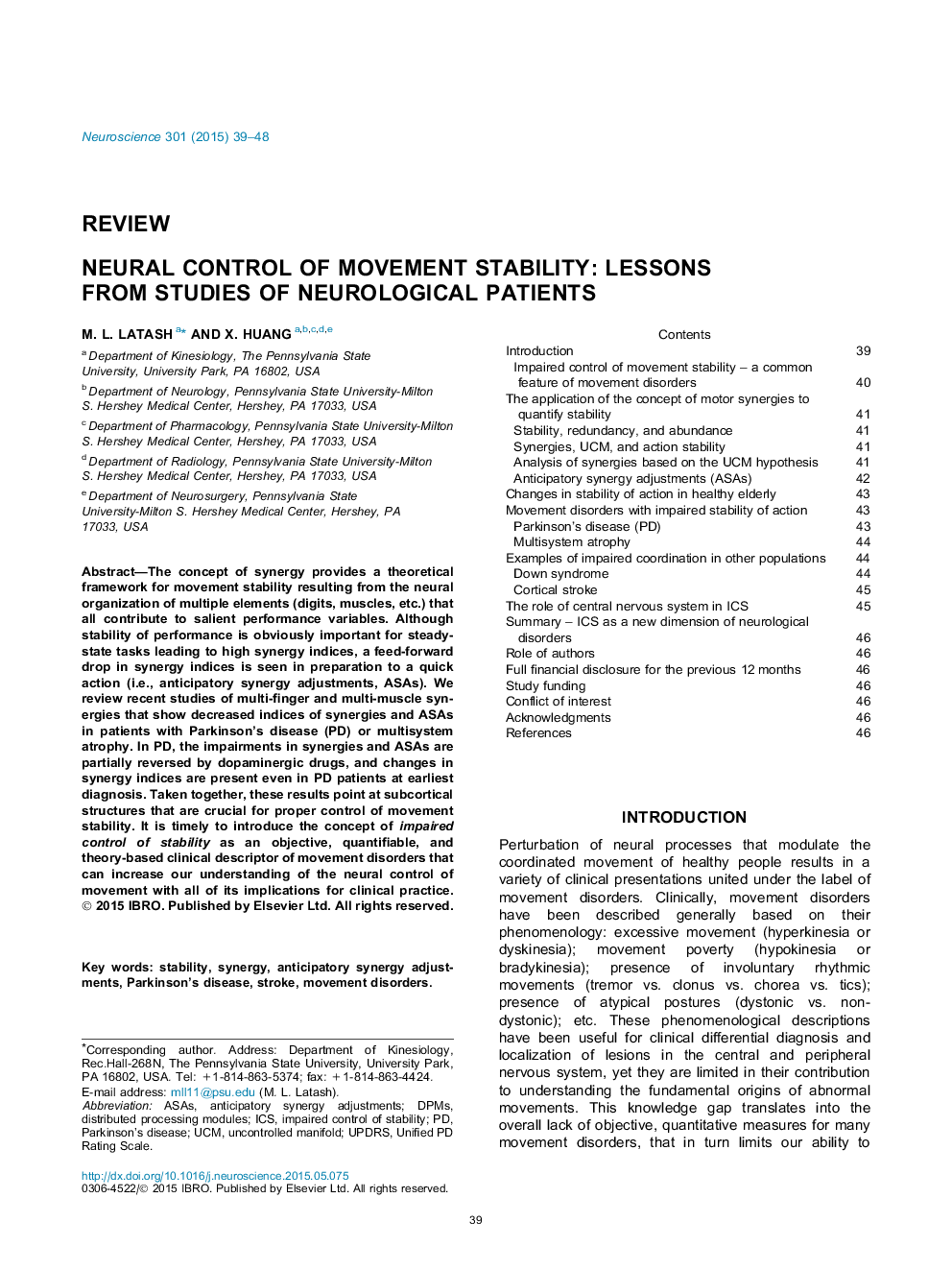| Article ID | Journal | Published Year | Pages | File Type |
|---|---|---|---|---|
| 6272128 | Neuroscience | 2015 | 10 Pages |
â¢Synergies are neural mechanisms ensuring task-specific movement stability.â¢Anticipatory synergy adjustments (ASAs) reduce stability in preparation to quick actions.â¢Impaired control of stability (ICS) is an objective descriptor of movement disorders.â¢Subcortical structures are crucial for control of movement stability.
The concept of synergy provides a theoretical framework for movement stability resulting from the neural organization of multiple elements (digits, muscles, etc.) that all contribute to salient performance variables. Although stability of performance is obviously important for steady-state tasks leading to high synergy indices, a feed-forward drop in synergy indices is seen in preparation to a quick action (i.e., anticipatory synergy adjustments, ASAs). We review recent studies of multi-finger and multi-muscle synergies that show decreased indices of synergies and ASAs in patients with Parkinson's disease (PD) or multisystem atrophy. In PD, the impairments in synergies and ASAs are partially reversed by dopaminergic drugs, and changes in synergy indices are present even in PD patients at earliest diagnosis. Taken together, these results point at subcortical structures that are crucial for proper control of movement stability. It is timely to introduce the concept of impaired control of stability as an objective, quantifiable, and theory-based clinical descriptor of movement disorders that can increase our understanding of the neural control of movement with all of its implications for clinical practice.
